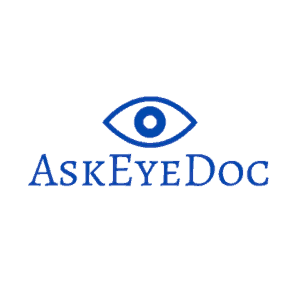- Recurrent Corneal Erosion
- Acute angle-closure glaucoma
- Ocular inflammation
- Iritis
- Uveitis
- Optic neuritis
- Endophthalmitis
- Dry Eye Syndrome
- Pink eye
- Allergic Conjunctivitis
- Cavernous sinus thrombosis
- Sinusitis
- Computer-related eye strain
- Ocular injury
- Corneal abrasion
- Corneal ulcer
- Shingles
- Corneal burn
- Foreign body in the eye
- Post eye surgery
Waking up with eye pain can be really scary and even debilitating.
Sometimes when we sleep the eye gets so dry that the eyelid attaches to the cornea like a tongue on a frozen pole. When this happens to the eye and we open our eyelids this can be extremely painful.
The cornea can be very sensitive to pain due to its many nerve endings. As you know the smallest piece of debris in the eye feels like a boulder.
So when the cornea becomes scratched or abraded it can cause severe pain.
There is an eye condition called Recurrent corneal erosion (RCE), which is characterized by a repeated breakdown of the outermost layer of the cornea (corneal epithelium), which causes pain, light sensitivity, excessive tearing, and foreign body sensation upon waking.
Many cases of Recurrent Corneal Erosion occur after an injury or surgery to prior weakening of the corneal structure making it more susceptible to corneal breakdown (erosion).
Symptoms of Recurrent Corneal Erosion
- Foreign body sensation upon waking
- Extreme eye pain
- Excessive tearing
- Light sensitivity (photophobia)
- Red-eye
Risk Factors for Recurrent Corneal Erosion
- History of Refractive surgery (LASIK, PRK, RK)
- History of corneal abrasion or corneal trauma
- Dry eye Syndrome
- Contact lens wear
- History of Cataract surgery
Treatment of Recurrent Corneal Erosion
Healing of the corneal erosion can take a few hours to a few days depending on the severity.
Usually, your eye doctor will prescribe antibiotic ointment and/or drops.
Depending on the severity and pain intensity a bandage contact lens may be necessary to help with the pain.
In severe cases, an amniotic membrane (Prokera) can be placed on the eye for 3 days to aid in the healing process.
It is important to keep the eye well lubricated using artificial tears at least 4 times per day and nighttime ointment. This helps the cornea to heal and to prevent future corneal erosion.
Acute Angle Closure Glaucoma
Think of your eyes like a sink with a faucet and a drain. The angle of the eyes is where the drain is located and if it closes, pressure can build up inside of the eye due to the fluid being produced but not draining. Angle-closure glaucoma not only causes eye pain but can also cause nausea and vomiting and if left untreated can cause blindness.
Patients who experience severe eye pain should see an eye doctor immediately.
Symptoms of Angle Closure Glaucoma
- Red Eye
- Painful Eye
- Nausea (some cases)
- Vomiting (some cases)
- Blurred vision
- Loss of vision
- Colored lights
(In contrast to open-angle glaucoma, which shows little to no symptoms). Click here for more information about open-angle glaucoma.
Treatment of Angle Closure Glaucoma
The main treatment of Angle Closure Glaucoma is to lower the eye pressure and decrease inflammation with the use of eye drops, oral medications, and lasers.
- Oral medication to lower eye pressure
- Eye drops to lower eye pressure
- Eye drops to decrease inflammation
- Laser to open the angle of the eye to reduce eye pressure (this type of laser can be used preventable to avoid angle-closure on patients with narrow-angle).
Ocular Inflammation
Inflammation of the eye can cause pain, redness, and blurred vision. Ocular inflammation has numerous and sometimes unknown causes.
Common Causes of Ocular Inflammation
A red eye is usually an inflamed eye, the following are some of the common causes of ocular inflammation:
- Dry eye
- Stress
- Lack of sleep
- Allergies
- Inflammatory conditions such as arthritis, Inflammatory bowel disease, Bachets, Crohn’s Disease, sarcoidosis, ankylosing spondylitis, and Sjogren’s
- Chemical burn
- Sunburn
- Trauma
- Infections: bacterial or viral
- Eye rubbing
- Grave’s disease
- Medication side effects (click here for a list of medications that can affect the eyes)
Treatment of Ocular Inflammation
The treatment of ocular inflammation will depend on the cause. Typically a mild steroid drop can be used to reduce inflammation. In the case of bacterial infection, an antibiotic drop is used. Allergies can be treated with anti-allergy medications or eye drops. Keep in mind that medications that treat allergies can cause dry eyes (for dry eye treatments click here).
Iritis and Uveitis
Uveitis is an inflammation inside the eye.
Uveitis can affect 3 parts of the eye: (anterior, middle, and posterior)
- Anterior Uveitis: swelling or inflammation of the iris (also known as iritis)
- Intermediate Uveitis: inflammation of the middle part of the eye called the ciliary body
- Posterior Uveitis: inflammation of the back of the eye (choroiditis or retinitis)
- Diffuse Uveitis (Panuveitis) can affect all three parts of the eye.
According to uveitis.org, uveitis is the third leading cause of blindness in the U.S.
Uveitis treatment
Seek treatment if you are experiencing:
- Eye pain
- Redness
- Light-sensitivity
Uveitis is treated with steroid eye drops with a slow taper, starting with a higher dose and slowly decreasing the dose to avoid rebound inflammation.
Optic Neuritis
Optic Neuritis is inflammation of the optic nerve. The optic nerve is a bundle of neurons that transmit the visual signal from the eye to the brain.
Symptoms of Optic Neuritis
- Eye Pain that worsens with eye movements
- Decreased vision
- Change in color vision
- Flashes of light that worsens with eye movements (in rare cases)
Causes of Optic Neuritis
The cause of Optic Neuritis is unknown but the following conditions can have an association:
- Multiple Sclerosis: the risk for MS (multiple sclerosis) is greater in someone who has had optic neuritis.
- Infections
- Medication side effects
- Auto-immune diseases
- Neuromyelitis OpticaSjogren’s
- Myelin oligodendrocyte glycoprotein (MOG) antibody disorder
Endophthalmitis
Endophthalmitis is a serious eye infection that can quickly lead to loss of vision if not treated promptly. Endophthalmitis is an infection inside the eye. Bacteria can enter the eyeball after eye surgery or an injury that has created a wound into the eyeball.
Common Symptoms of Endophthalmitis
- Painful eye
- Red-eye
- Nausea
- Vomiting
- Light sensitivity
- Blurred vision
- Eyeball hard to the touch
- White inside of the eye (hypopyon, see photo)
Causes of Endophthalmitis
- Cataract surgery
- Glaucoma surgery
- Retinal surgery
- Vitreous surgery (vitrectomy)
- Penetrating eye injury
Endophthalmitis Treatment
A patient with endophthalmitis will be sent to a retinal specialist immediately.
Endophthalmitis treatment may include:
- Antibiotic injection into the eyeball
- Steroid (anti-inflammatory) injection into the eyeball
- IV antibiotics
- Occasionally oral antibiotics
- May require vitrectomy (surgical removal of the vitreous gel inside of the eye).
- May require intraocular pressure-lowering medications (oral or eye drops)
- Daily monitoring
The goal of treatment is to treat the infection and calm the inflammation. Once the infection is gone the visual outcome is variable.
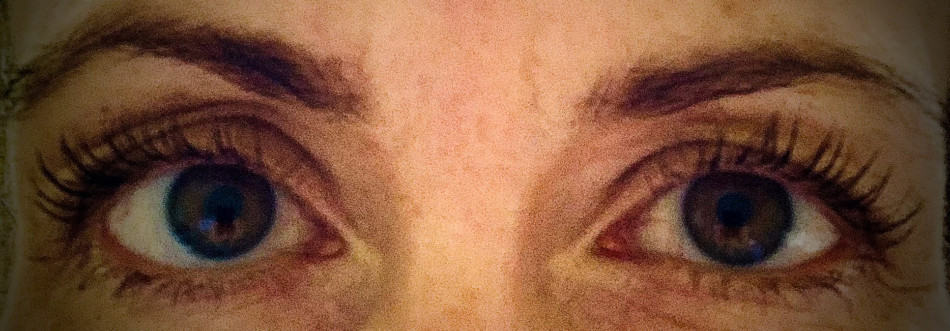
Dry Eye Syndrome
Dry Eye Syndrome can be extremely painful and there are many causes, so many in fact that I wrote an article on 21 causes of Dry Eye Syndrome (click here to view).
Common Dry Eye Symptoms
- Irritation
- Foreign body sensation
- Burning
- Intermittent fluctuations in vision
- Photophobia/light sensitivity
- Tired/Heavy eyes
- Red eyes
- Tearing
- Occasionally eyes crusted shut in the morning
- Occasionally severe pain upon waking (Recurrent corneal erosion)
- Sandy/gritty sensation
Common Causes of Dry Eye Syndrome
- Meibomian Gland Dysfunction
- Blepharitis
- Rosacea
- Acne
- Omega-3 deficiencies
- Dehydration
- Advanced age
- Hormone changes/Menopause
- Dry windy environment
- Medications
- Air conditioning and heater
- Computer use
- Eye surgery
- Vitamin A deficiency
- Sjogren’s Syndrome
- Autoimmune diseases
- Allergies
- Smoke
- Contact Lenses
- Lagophthalmos
- Diabetes
Common Dry Eye Treatments:
- Hot compresses 10-20 minutes
- Eyelid cleaners such as OcuSoft, Systane lid wipes, or baby shampoo
- Artificial tears lubricate the eyes. Make sure it does not say to get the red out.
- Xiidra
- Restasis
- Punctal plugs
- Stay hydrated
- Omega 3 supplementation
- Avoid smoke and wind
- Review medication side effects
- Adjust your seat to be higher than your computer monitor
- Use daily contact lenses instead of extended wear contact lenses
- Use a humidifier
- Sleep with an eye mask if you have lagophthalmos
- Treat rosacea
- Treat blepharitis
- Eat a balanced diet high in omega 3 fatty acids and antioxidants
- Dry Eye Device: ILUX, Lipiflow, IPL
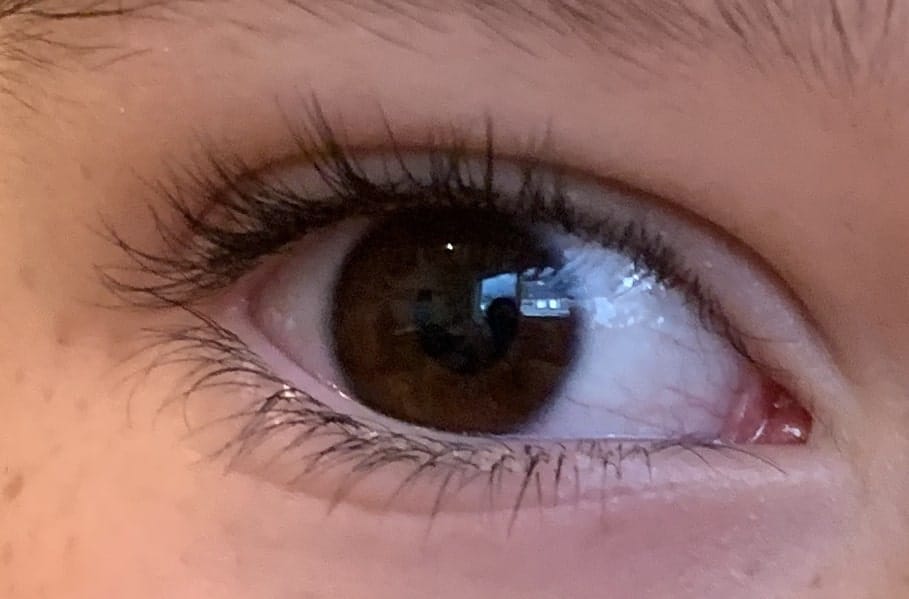
Pink Eye (Conjunctivitis)
Pink eye is not a technical diagnosis, but a term that most people say when someone has an eye infection. Pink eye could be due to bacteria, viruses, or allergies.
For more detailed information on Pink Eye, please click on this link to my post on pink eye.
Common Symptoms of Pink Eye
- Red-eye
- Itching eyes (typically allergic conjunctivitis)
- Thick discharge (typically bacterial conjunctivitis)
- Watery eyes (typically viral conjunctivitis)
Causes of Pink Eye
- Allergy
- Virus
- Bacteria
Pink Eye Treatments Depend on the cause:
- Discontinue contact lens use
- Allergic Conjunctivitis: Allergy eye drops or cold Artificial tears
- Viral Conjunctivitis: Artificial tears
- Bacterial Conjunctivitis: antibiotic eye drops or sometimes oral antibiotics
Cavernous Sinus Thrombosis
Cavernous Sinus Thrombosis is extremely rare, affecting approximately two to four per million people per year, with a higher incidence in children.
A cavernous sinus thrombosis is a blood clot that occurs in the cavity at the base of the brain.
Common Causes of Cavernous Sinus Thrombosis
- Sepsis
- Sinus infection
- Tooth infection
- Ear infection
- Nose infection
Common Symptoms of Cavernous Sinus Thrombosis
- Eye Pain
- Double vision
- Blurred vision or loss of vision
- Bulging eyes (this could be a symptom of other conditions, click here to learn about 14 conditions that cause bulging eyes)
- Droopy eyelid
- Red-eye
Cavernous Sinus Thrombosis Treatment
- Treat the source of the infection
- Antibiotics
- Steroids in some cases
- Blood-thinner such as Heparin
Sinusitis
Sinusitis is an infection of the sinuses. The sinuses surrounding the eyes can become inflamed and cause pressure on the eyes.
Common Symptoms
- Eye Pain
- Teeth pain
- End of the day fatigue
- Headache
- Nasal congestion
- Postnasal drip
- Facial pain
Common Causes
- Allergy
- Infection
- Deviated septum
- Nasal polyps
Treatments
- Hot compresses
- Decongestants
- Nasal sprays: Try xylitol before a decongestant
- Sinus rinse: Netti pot
- Stay hydrated
- Ginger, lemon, honey tea
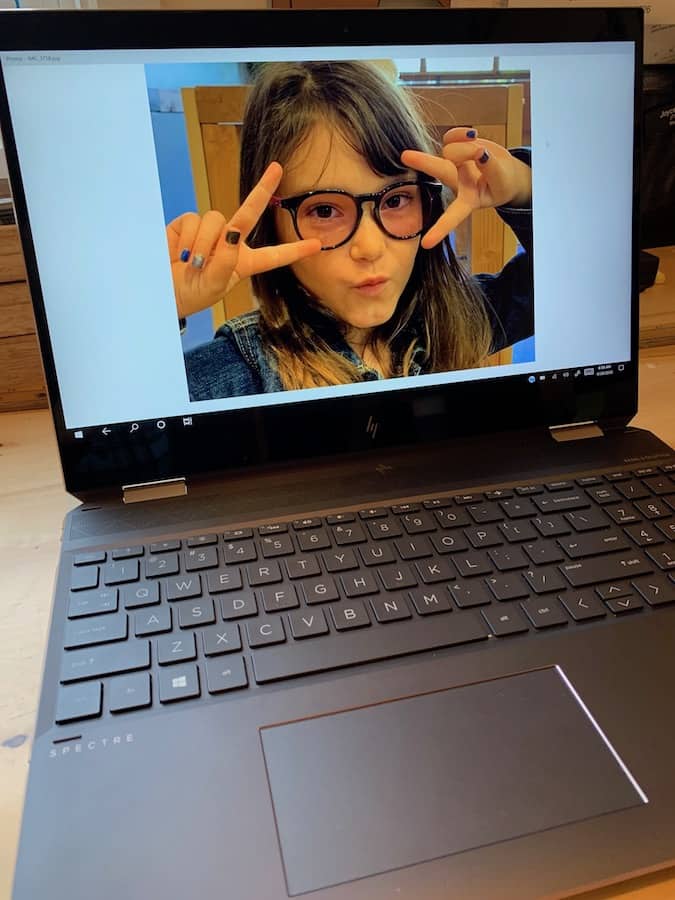
Computer-Related Eye Strain
For more details on computer vision syndrome including a video and chart please click here.
Common Symptoms of Computer-Related Eye Strain
- End of the day fatigue
- Eye Strain or fatigue
- Red Eyes
- Watery eyes
- Blurred vision
- Headache
Treatment for Computer-Related Eye Strain
- 20-20-20 Rule: look at something 20 feet away, every 20 minutes for 20 seconds
- Sit higher than your monitor
- Use a blue light filter (click here to learn about blue light and how to activate the filter on your mobile device).
- Take breaks
- Treat Dry Eyes: Use Artificial tears and stay well-hydrated (click here for more dry eye treatments)
Ocular Injury
An injury to the eye may result from severe blunt trauma to the eye. Any penetrating wound into the eye is considered a medical emergency. If you have had an injury to your eye go to the ER or preferably the nearest Ophthalmologist immediately.
A globe rupture will require immediate surgical intervention, usually under general anesthesia, meaning you will be asleep for the procedure.
Depending on the severity of the injury, your vision will most likely be impaired. The sooner the rupture is repaired the better the outcome will be.
Symptoms of an Ocular injury
- Eye pain
- Red-eye
- Blurred vision
- Watery eye
Corneal Abrasion
A corneal abrasion is just what it sounds like an abrasion or scratch to the cornea. This will be very painful as the cornea has many nerve endings.
Common symptoms of a Corneal Abrasion
- Red-eye
- Painful eye
- Watery eye
Treatment of a Corneal Abrasion
- Antibiotic eye drops
- Sometimes a Bandage Contact lens for pain relief
- Steroid eye drops (in some cases)
Corneal Ulcers
The cornea, like our skin, has a protective layer called the epithelium. When the corneal epithelium becomes damaged it can become sore, inflamed, and infected resulting in a corneal ulcer.
Corneal ulcers are most common in patients who wear contact lenses. Especially patients who wear contact incorrectly. Wearing Contact lenses incorrectly means: sleeping in your lenses, wearing them past the recommended use, and not cleaning them properly.
Common Risk Factors of Corneal Ulcers:
- Over-wearing contact lenses
- Weakened immune system
- Auto-immune diseases
- Diabetes
- Poor hygiene
- HIV
- Dry eye Syndrome
- Ocular Trauma
Treatment of Corneal Ulcer
- Antibiotic eye drops
- Steroid eye drops
- Regular follow-up with an eye doctor
- Discontinue contact lens wear
Shingles (Herpes Zoster Virus)
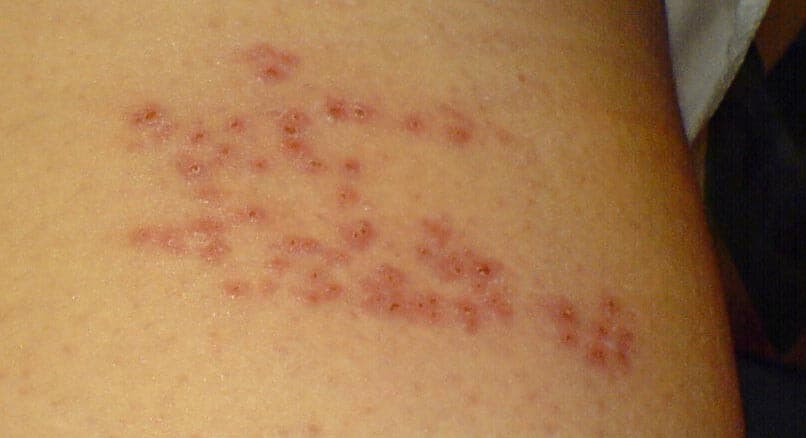
Shingles and the Eye
Unfortunately, there is a risk of shingles affecting the eye. If the shingles blister is near your eye, then see your eye doctor immediately. Using an eye ointment at bedtime can be helpful as a barrier while sleeping to protect the eye.
If the Shingles have affected your eye then anti-viral eye drops should be started to prevent scarring of the cornea, which can lead to decreased vision.
Again, the sooner you have treatment the better the outcome.
Symptoms of Shingles:
- Flu-like symptoms
- Itchy rash on one side of the face, arm, or body
- Burning skin
- Muscle ache on one side of the body
- Sensitive skin on one side of the body
- Severe pain on one side of the body
The symptoms can vary from mild to severe. Shingles are typically unilateral, meaning that it usually affects one side of the body or face.
Risk Factors for Shingles
- Increased age: about half of the cases of shingles are people age 60 or over.
- Decreased immune response: a weakened immune system can make you more susceptible to developing shingles.
- Stress: has been shown to weaken the immune system.
- Steroid usage
Treatment of Shingles
Shingles are typically treated with oral prescription medications called anti-virals. If you have a rash then do not hesitate to see your doctor. The quicker you are treated the faster the symptoms will dissipate.
How to relieve symptoms of Shingles
- Cool Baths
- Corn starch bath
- Corn starch applied to the rash in the form of a paste (I applied cornstarch will in the bath and found it very soothing)
- Avoid sun (since the rash burns, sun exposure can intensify this symptom)
- Over the counter pain reliever (Advil was very helpful at relieving most of my symptoms)
- Stay hydrated (drink a lot of water throughout the day)
- Avoid swimming or jacuzzi’s
- Avoid saunas or steam rooms
Corneal Burn
A corneal burn can occur if a chemical gets into the eye.
Symptoms of a Corneal Burn
- Painful Eye
- Red Eye
- Watery eye
- Blurred vision
- Light sensitivity
Treatment of a Corneal Burn
- Remove Contact lenses immediately
- Rinse the eye with Saline or cool water for 15 minutes
- See an eye doctor as soon as possible
- Antibiotic eye drops
- Steroid eye drops (in some cases)
Foreign Body in the Eye
A foreign body can be anything from metal to dust and anything in between. Just the other day I had a patient with a thin string that had penetrated his cornea, when I pulled on it, the string was about an inch long inside of his cornea.
When anything gets into the eye it can be very painful.
Symptoms of a Foreign Body in the Eye
- Painful eye
- Red-eye
- Watery eye
- Hard to open the eye
Treatment of a Foreign Body in the Eye
Sometimes just rinsing the eye is enough to remove an object in the eye; however, sometimes it requires a visit to the eye doctor to remove the object.
In cases where the object penetrates the eye then antibiotic eye drops may be necessary.
Pain after Eye Surgery
Any eye surgery is bound to cause a little pain. If the pain becomes severe, causing blurred vision, nausea, or severe light sensitivity see your eye doctor immediately.
Conclusion:
Eye pain can cause be debilitating. It is important to seek proper treatment by an Optometrist or Ophthalmologist to help with fast recovery.
